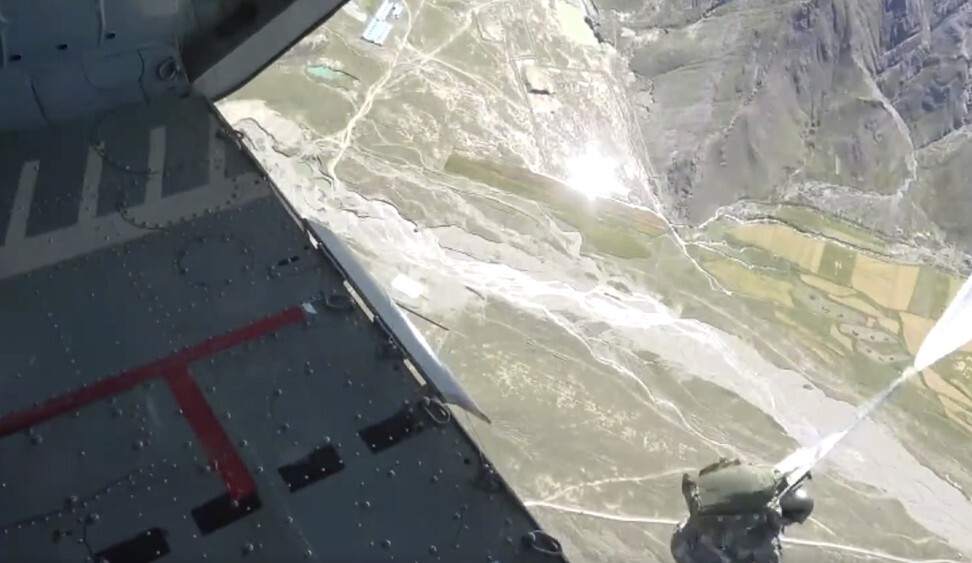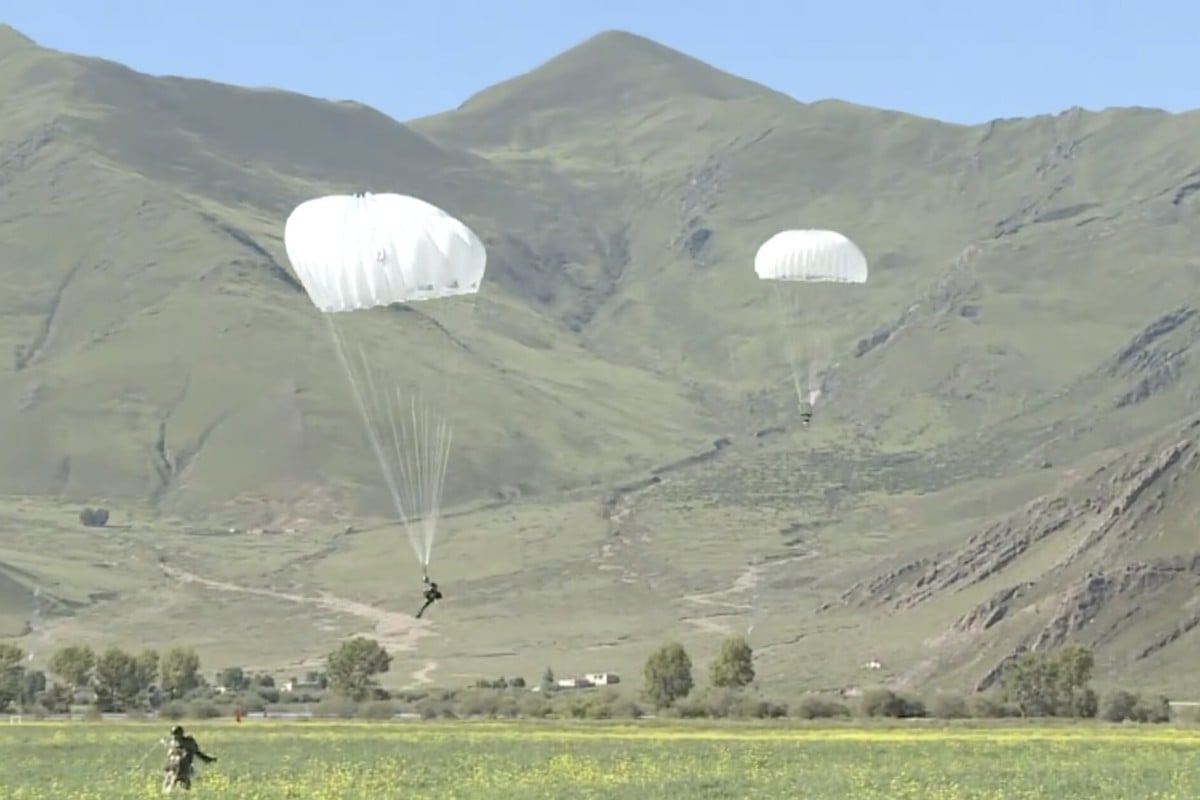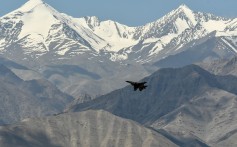CCTV reports over 300 Chinese troops conducted a jump over the Tibetan Plateau
- Drawing on elite forces from various units for high-altitude airdrops suggests China is preparing for potential conflict, analyst says
According to a report on Chinese state broadcaster CCTV on Wednesday, a special operations brigade from the Tibet Military Area Command and an army aviation brigade jointly organised the first parachute training “in an unfamiliar area which is over 4,000 metres above sea level recently”.
Without disclosing the date or location of the training, CCTV said that so far more than 300 officers and soldiers of the special operations brigade had successfully carried out their first jump on the Tibetan plateau and the training would expand to more than 1,000 troops to “lay a good foundation” for armed parachuting and multi-parachute training in high-altitude areas.
CCTV said the training was to “improve the three-dimensional assault capabilities” of the officers and soldiers on the plateau and enhance the “overall combat capabilities of the troops stationed in Tibet”.
On an official social media account of the PLA’s Central Theatre Command, a Xian Y-20 airlifter was shown at an unnamed airfield – thought to be in the Tibet autonomous region – along with at least three Xian H-6 bombers.
CCTV had reported in late August that hundreds of paratroopers and their heavy equipment were airdropped to the plateau from a Xian Y-20 in a training exercise for the first time.

According to Shanghai-based news website The Paper, heavy equipment in the airdrop training involved 107mm multi-barrel rocket launchers with a maximum range of about 8km (5 miles), regarded as an important support weapon for airborne troops and other rapid reaction forces.
While India’s special forces focus on mountain warfare capability, their Chinese counterparts are trained to be all-rounded fighters, launching assaults “from the air, land and water”, said Hong Kong-based military expert Song Zhongping.
Song said the fact that China had pulled elite forces from various units to train for high-altitude airdrops was a clear sign that it was preparing for potential military conflict.
“While airdropping has been part of regular training of the Chinese special forces, the troops still need to get used to the high altitude, as the thinner air and stronger radiation will pose new challenges for soldiers’ physical condition, especially those trained in low-altitude areas,” Song said.
“The high-altitude equipment also needs to be tested and calibrated. The troops also need to become familiar with this equipment and fight alongside other units.”
Another Chinese military analyst said high-altitude airdrops could be very different from regular special forces training, especially those from the Central Theatre Command. Its paratrooper brigade is based in Wuhan, Hubei province, and has been deployed to the border region since June.
“Thinner air means you drop faster. Wind conditions on the Tibetan Plateau are very different from central China. Not only the airborne troops, but also the pilot of the airlifter, the armoured units and so on all need to adjust to the new environment in order to fight effectively,” said the analyst who requested anonymity.

























No comments:
Post a Comment
How did you like the post, leave a comment. I would appreciate hearing from you all. Best wishes from JC's Naval, Maritime and Military News